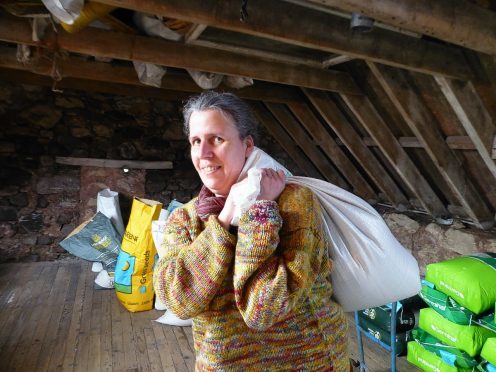A traditional Scottish crop grown by a handful of specialist seed growers on the carses of Stirling and Gowrie faces extinction without a sympathetic hearing from the Scottish Government.
Scots Timothy hay grown on the heavy clay soil of the carses fetches top prices from livestock farmers across the UK.
It’s prized by top racecourses like Newmarket; fed to Metropolitan Police horses and is a favourite food of the rhinoceros and other exotic animals at Blairdrummond Safari Park. But the Scots variety has been overtaken by more modern alternatives, and specialist grass seed producers have now dwindled to just a handful.
“There is no animal that won’t eat Timothy hay,” said Alison Muirhead, a seed grower and small-scale seed merchant who includes the variety in most of the mixes she blends in her wooden farm loft for sale to growers across the UK.
“Scots Timothy has been grown commercially since the late 1800s when farmers on the carse first collected and cultivated the species,” she explained.
“It’s high yielding, winter hardy and has great longevity. It creates an excellent habitat for wildlife and it is critical for biodiversity and future food security. It has stood the test of time.”
However, while it was once widely grown, there has been a dramatic decline in seed production in the past 30 years, from 2,000 acres in the 1980s to only 150 acres today.
Scots Timothy is the last commercially available “Landrace” grass seed in the UK.
Landraces are traditional species that have developed through adaptation to their environment in isolation from other populations, and other old varieties like Kent wild white clover and Essex broad leaf red clover have recently been lost. Alison is passionate about saving Scots Timothy from extinction.
“We have seen the replacement of traditional varieties with modern, uniform cultivars for several reasons,” said Ms Muirhead.
“Subsidy schemes promote the use of uniform varieties like perennial ryegrass. There’s a lack of education of the unique value of Landrace varieties, it’s a complex seed to grow and the producers with the specific know-how are ageing and giving up. Other Timothy seed is widely imported from Canada and my fear is that the Scots variety will just die out.
“There are small quantities stored for posterity in fridges but it needs to be grown and valued. You don’t save the curlew by locking it away.”
Ms Muirhead, who is secretary of the Scots Timothy Seed Growers Association, argues that Landrace farmers should have been treated like organic farmers under the new Common Agricultural Policy (Cap), by being made exempt from the greening requirements.
She said: “Scots Timothy could have been used in Ecological Focus Areas (EFAs) because it is a slow growing variety and has a late cutting time which is good for wildlife.
“The tufted growth of the variety benefits birds such as the curlew and skylark because it gives them space between the plants to hide from predators, and small mammals flourish in the fields as the ground is not ploughed up every year. It’s a great habitat for voles, field and wood mice and brown hares, all of which are on the dinner menu for the barn owls which are regularly seen on the carse.”
Ms Muirhead has made representations to Scottish Government officials, to Scottish Natural Heritage and to politicians for exemptions from the Cap rules, but so far to no avail.
“Scots Timothy is the only grass seed to be produced in Scotland. All the other grass we sow here is imported from Canada, the United States, New Zealand, Denmark and Holland. The big companies don’t want to sell our royalty-free seed when they can get royalties for their own,” she said.
“But, as well as being a great product, this seed is part of our culture and heritage. We need to do everything in our power to ensure we don’t lose it.”
